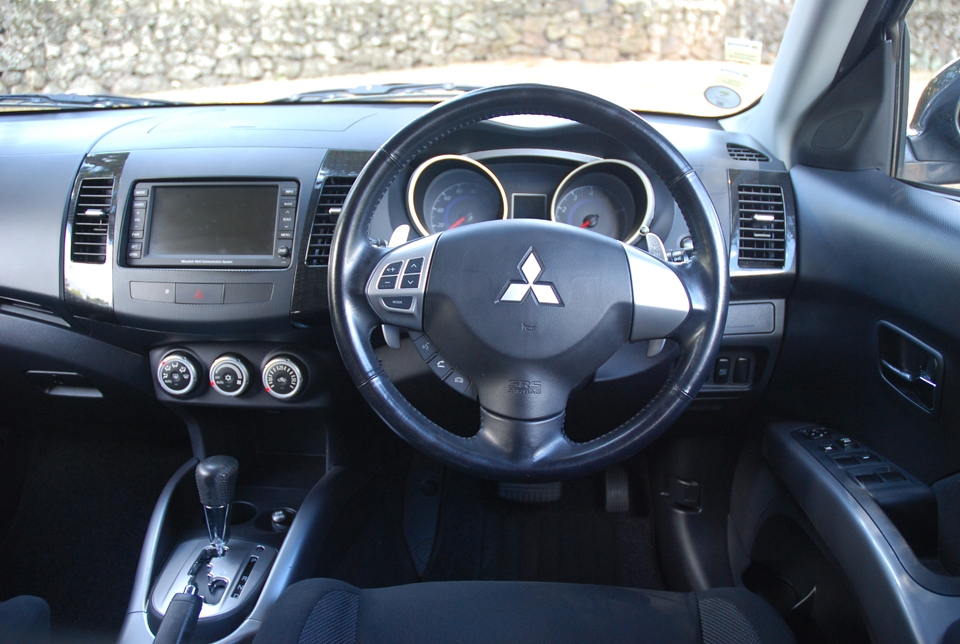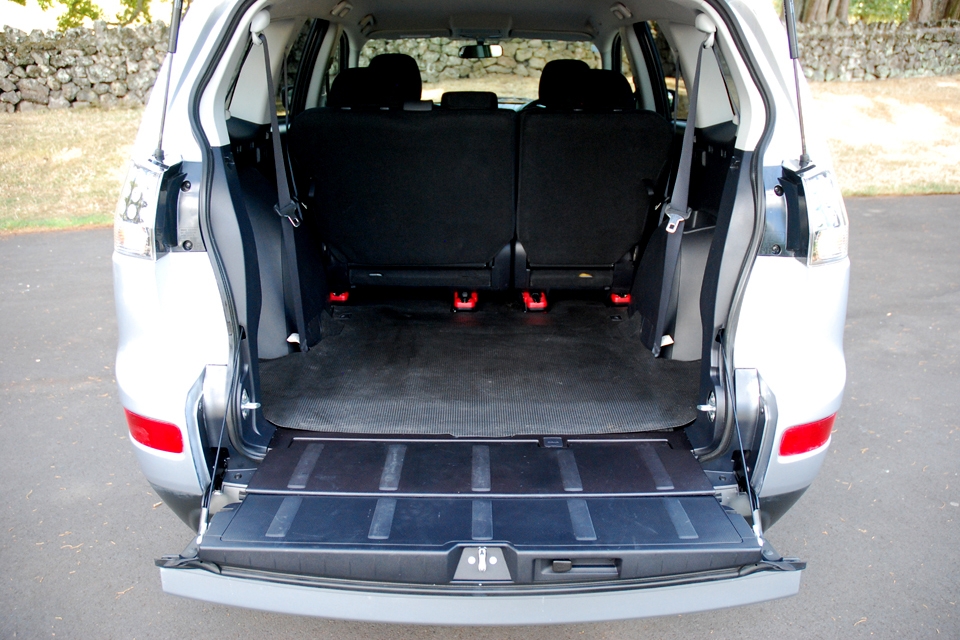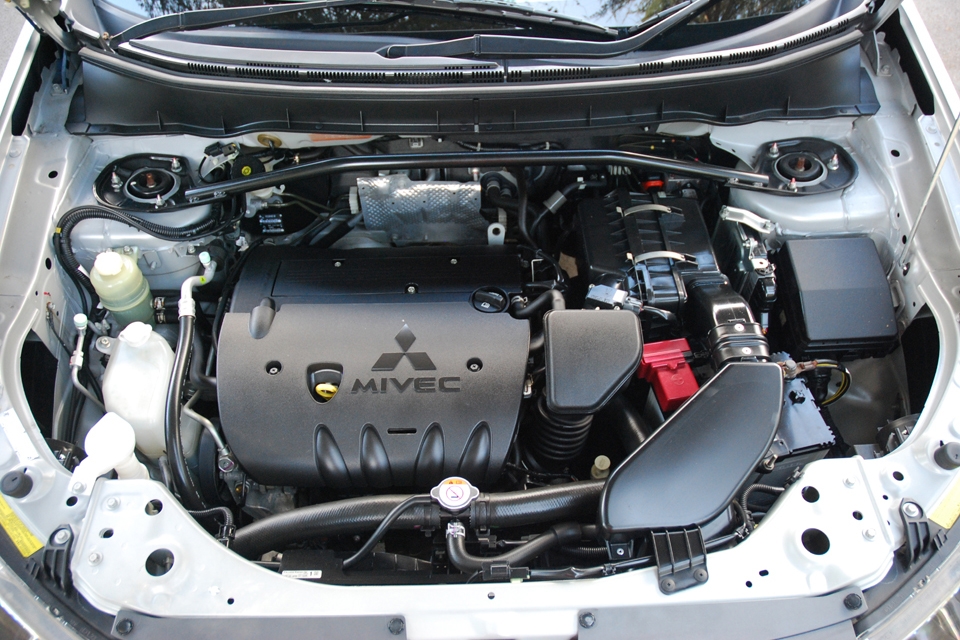Mitsubishi Outlander 2006-2012 used car review
The Mitsubishi Outlander is an SUV ideal for families, with seating for up to seven.

The Mitsubishi Outlander is an SUV ideal for families, with seating for up to seven, a range of reliable engines and enough off-road ability for the ski field or beach.
The Outlander replaced the Airtrek in the Mitsubishi line-up in 2005. While that car looked more like a station wagon, the new model was styled to look like a proper off-road vehicle. The Outlander is a reliable car.
Inside and out
Getting into the Outlander is easy because the seat sits at the average person’s hip height, so you slide across into the seats rather than climb up or down into them.
A flexible interior is one of the Outlander’s key features. Most are seven-seaters, with five conventional seats, and a third row of two seats that can fold completely flat into the boot floor. The second row can tumble-fold forward (the seatback folds forward, and the seat base then swivels forward too). There’s excellent access to the rear, or for additional luggage capacity.
It is wide and spacious, comfortable for three people, while the third row is small and best suited to children. However, with all three rows in use, there is virtually no luggage space available. A simple solution we have noted is to add a roof box, which has proved a popular addition to Outlanders. With the third seat row folded, space expands to 541 litres, enough for three or four large suitcases.
Loading the Outlander is easy thanks to a split tailgate. The upper portion lifts as usual, while the lower third folds down, so there is no ‘lip’ to lift bags over. It also creates a handy seat for picnics or watching sport.
The Outlander’s interior design is dark, modern and slightly sporty in feel, with chrome garnishes on the steering wheel and around the transmission shifter. Our review vehicle has a black fabric seat trim, perfect for hiding marks and wear. It has climate control air conditioning and a touch screen entertainment system with a CD player, requiring a band expander to receive local radio stations.
Mitsubishi put a lot of effort into making the Outlander look like a proper off-road vehicle. Its big, chunky wheel arches filled by 18-inch wheels, and plastic protection plates at the front and rear, are purely for styling and offer no real protection.
On the road
Our 2006 used-import Outlander is powered by a 2.4-litre four-cylinder petrol engine, paired with a CVT automatic transmission. Other engine options include a 2-litre four-cylinder also matched to a CVT, and a 3-litre six-cylinder paired with a six-speed automatic. Producing 127kW and 230Nm, the 2.4-litre engine will be the best choice for most people.
Both around town and on the open road this engine feels like it has plenty of power. However, it can sound a bit loud when worked hard, for example when fully laden up open-road hills or when accelerating. The CVT automatic transmission is smart and smooth, and you can shift it manually using steering-wheel-mounted paddles if you need additional performance.
The Outlander corners well and has a very comfortable ride. However, you will experience a little body roll. A high level of road noise also makes its way into the cabin.
All-wheel drive is optional on the Outlander and highly desirable for the extra grip it offers. A dial between the front seats allows selection of its three modes — 2WD for front-wheel drive, 4WD for the automatic four-wheel drive, and Lock, which splits power equally between the front and rear wheels for very slippery surfaces. The relatively low ground clearance (the distance the body sits above the road) means you cannot go far off-road
The Outlander has only modest towing abilities, with the 2.4-litre able to tow 500kg (unbraked), and 1,500kg (braked), while the 3-litre can pull an additional 100kg.
With its high sitting position, forward visibility is good from the driver’s seat of the Outlander. Rear visibility, on the other hand, is not great, especially when the headrests are folded up on the third-row seats. While our review car has a reversing camera, they are not standard. The turning circle is small for a vehicle of this size, at 10.6 metres.
Reliability
The first-generation Outlander is a reliable and trouble-free model. The 2.4-litre MIVEC petrol engine dates back many years and is robust and dependable. Mitsubishi four-cylinder engines have a habit over time of developing valve train noise, although this is not a problem if the engine is regularly serviced. It uses a timing chain that will not require regular replacement.
With heavy use over time the rear suspension springs can break, with replacements costing from $600. This is unlikely if the Outlander spends its life mostly on regular roads.
When buying, look under the car, especially the front lower cross member and rear subframe or suspension components, and inside the wheel arches, checking for discolouration and bubbling. If you see it avoid that car, as this is expensive to fix.
While the interior plastics are durable, the folding rear seat mechanisms feature plastic covers and trims that are quickly kicked off by children. While this does not affect the use of the vehicle, some owners may not like the exposed mechanisms, and will want to check the car they are buying still has them.
Safety
According to RightCar, the Outlander (’06–’09) has been awarded the maximum five-star Used Car Safety Rating, based on real-world crash data. Our review vehicle features driver and passenger airbags, anti-lock braking and electronic stability control. The latter is a desirable optional extra, and you can tell a car has it by searching for an ‘ESC off’ button below and to the right of the steering wheel.
ISOFIX child seat mounts are present in the window seats of the second row, with none in the third row. All seating positions offer a proper shoulder-style seatbelt.
Reversing cameras and sensors were optional on the Outlander, and we think they are important, as visibility to the rear is very restricted.
Cost of ownership
Servicing requirements for the Outlander are relatively infrequent, at every year or 15,000km. A standard service costs $350 at a Mitsubishi dealer, while the spark plugs should be replaced every 90,000km for $250. CVT automatic transmissions often need frequent, expensive servicing — in this case, it only needs to be looked at every 105,000km, at the cost of $250.
RightCar estimates that over 14,000km of driving a year, this car will cost $2,600 to fuel. The 60-litre fuel tank will cost $120 to fill at $2 per litre, and you should be able to travel 530km before the fuel light comes on.
Sitting in the second cheapest ACC levy band, the Outlander’s annual licensing fee (registration) is $112.16.
Trade Me Insurance estimates insurance for the car will cost $49.76* per month for a car worth $10,400. That is $8 a month less than a Nissan X-Trail.
Buyers' guide
Used-import Mitsubishi Outlanders on Trade Me range from $6,500, rising to $26,000 for later and lower mileage vehicles.
We think the 2.4-litre version is the best car for most buyers. Real-world fuel use is barely higher than the 2-litre version, which is better suited to buyers who rarely carry more than two or three people.
Variants
- M — The entry-level specification, available with 2-litre and 2.4-litre engines. Features include climate control air conditioning and keyless entry and start. Steel wheels were standard on this model, but most have been upgraded with alloy wheels.
- G — Available with the 2.4-litre and 3-litre engine. Additional features include steering-wheel paddles for the transmission, leather wrap for the steering wheel, steering-wheel audio controls, a premium speaker system and 18-inch alloy wheels.
New Zealand–new Outlanders feature different specifications and came in LS, XLS and VRX models with the same selection of engines and transmissions.
Timeline
- 2006 Launched in Japan
- 2008 Minor facelift, with a new front grille
- 2010 Major facelift, with a new-look nose, headlights, tail lights and wheels
- 2012 Replaced by a new model
Details
2007 Mitsubishi Outlander G
$12,000 to $25,000 for models which have travelled 70,000 to 120,000km
2.4-litre four-cylinder, 125kW/232Nm (claimed)
CVT automatic, all-wheel drive
Five-star Used Car Safety Rating
15,000km or twelve months
Space saver
9.3-litres per 100km (claimed)
Regular
4765mm
1795mm
1655mm
500kg (unbraked), 1500kg (braked)
10.6m
This review covers the Mitsubishi Outlander for model years 2006, 2007, 2008, 2009, 2010, 2011 and 2012.
Test vehicle kindly supplied by City Motor Group, Penrose.
*Our insurance estimates are based on a 35-year-old male with no accidents in the last two years, garaging the car in Mission Bay, Auckland. The car is not used for business and will cover 10,000km-20,000km a year. We estimate with no optional add-ons and $750 excess. Customise your estimate at Trade Me Insurance.
Image gallery
Also consider






